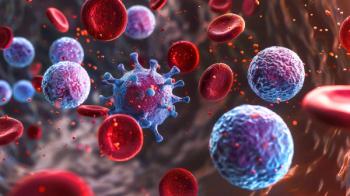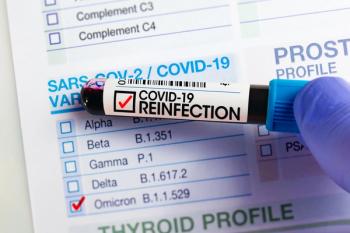
Environmental Toxin BPA Affects Gut Microbial Communities in Children
Children with normal weight had different community relationships compared to children with overweight or obesity.
The gut microbiota of children with a normal weight may be more resilient when exposed to endocrine disruptors like bisphenol A (BPA), according to investigators with the University of Granada, Spain, who published the results of a recent study in the journal mSystems. In effect, BPA can promote different microbial communities in normal weight children compared to children with obesity or overweight.1
“We found that the gut microbial community responds differently to BPA exposure depending on the [body mass index] of the individual,” said senior study author Margarita Aguilera, PhD, a microbiologist at the University of Granada in Spain, in the press release. This points to there being “intricate interplay between gut microbiota and potential human pathophysiology resulting from cumulative BPA exposure.”1
BPA is an estrogen-mimicking xenobiotic that can disrupt the endocrine system. Commonly found in polycarbonate plastics, epoxy resins, and thermal printing paper, it has been showing upmore often in human saliva, hair, and blood samples, which suggests that the toxin accumulates in the body.2
A growing body of literature suggests that xenobiotic chemicals can also cause obesity (obesogenic), and early-life exposure to xenobiotics and other endocrine disrupters can impact childhood obesity and future health issues.2 Moreover, the toxin may alter the gut microbiome, increasing certain gut microbiome communities.1,2
Yet, these taxa (ie, a unit used in the science of biological classification or taxonomy) may be able to serve as biomarkers for BPA exposure. Investigators conducted this study to evaluate howBPA impacts the gut microbiota taxa in relation to childhood obesity, the overall relationship between BPA, gut microbial dysbiosis, and obesogenic phenotypes, and possible bacterium that could be used as biomarkers of BPA exposure.2
Investigators included a cohort of 106 children between ages 5 and 10 years (the children were originally part of the European Food Safety Authority’s OBEMIRISK project); among participants, 60 had normal weight while 46 had overweight or obesity.2
Investigators collected fecal samples from the children, then exposed the samples to different levels of BPA. After 3 days incubation, the team applied 16s rRNA sequencing to and amplicon sequencing to the samples.2
Of the 333 BPA-resistant isolated species exposed to BPA, Clostridium and Romboutsia remained after being exposed to BPA; these were positively associated with microbiota community richness. The Intestinibacter, Escherichia-Shigella, Bifidobacterium, and Lactobacillus species were inversely correlated with gut diversity. Prior studies have associated communities of Bifidobacterium and Lactobacillus with an obesity phenotype, and this study shows that they can be used as taxa biomarkers within the BPA-tolerant microbial community.2
In addition, children of a normal weight continued to have a more enriched, structured, and connected taxa network in the gut microbiome compared to children with overweight or obesity. This could imply that their community is more resilient to ill effects of BPA.2
“In this sense, subnetwork analysis generated with the BPA-cultured genera showed a correlation between taxa connectivity and more diverse potential enzymatic BPA degradation capacities,” wrote the study authors.2
The major limitation of the study includes using 16S rRNA gene sequencing—this limits taxonomy resolution. Future efforts are still needed to understand the relationship between BPA-tolerant gut taxa and obesity. There may also be bacterial isolates that prevent the obesogenic effect of xenobiotics, but more research should be done, according to the study authors.2
Understanding the link between BPA, obesity and the gut microbiome can guide interventions and policy changes that reduce factors contributing to risk of childhood obesity, Aguilera said.1
“We want to raise awareness about the health risks associated with microplastics that enter our bodies, and those that circulate in the environment,” Aguilera said in the press release. “It’s crucial for individuals to be mindful of these concerns.”1
REFERENCES
1. BPA exposure linked to gut microbiota, childhood obesity in new study. American Society for Microbiology. News Release. March 1, 2024. Accessed on March 5, 2024.
2. Lopez-Moreno A, Cerk K, Rodrigo L, Suarez A, Aguilera M, Ruiz-Rodriguez A. Bisphenol A exposure affects specific gut taxa and drives microbiota dynamics in childhood obesity. mSystems. 2024. doi:10.1128/msystems.00957-23
Newsletter
Stay informed on drug updates, treatment guidelines, and pharmacy practice trends—subscribe to Pharmacy Times for weekly clinical insights.


















































































































































































































